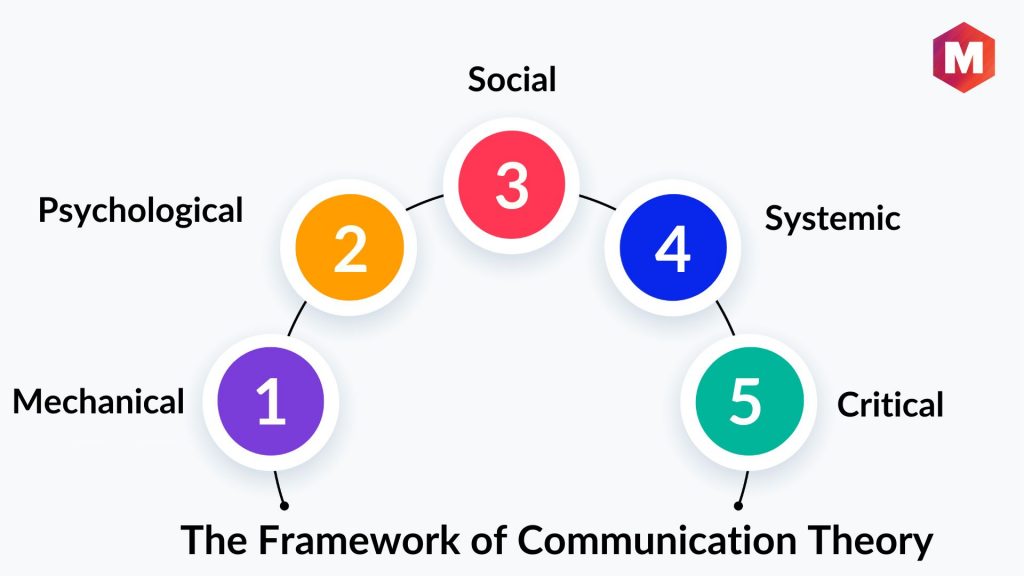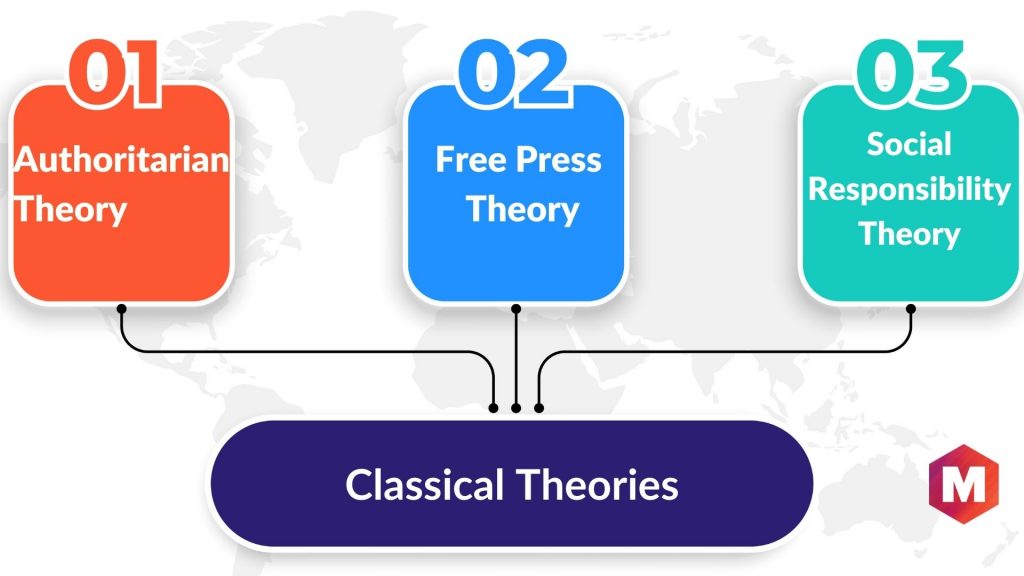The communication theory is a simple statement proposed by S. F. Scudder that all living beings communicate through different communication methods.
Table of Contents
What is Communication Theory?
Every living organism communicates to another living organism of his kind through a unique communication method. For example, animals communicate with each other but use different sounds; humans interact with each other with the help of different words, letters, symbols, pictures, or gestures.
The need for communication is present in every living being, and without communication, we would not exist and be like bricks lying around – without movement and life.
The Framework of Communication Theory
Are there any practical tips for effective communication in today’s world?
Effective communication is paramount in this digital age where more individuals are communicating remotely than ever before. One essential tip to enhance communication is to prioritize clarity over complexity. Using straightforward language helps to avoid misunderstandings, especially when communicating across different cultures and languages. The Harvard Business Review underscores the importance of simplicity in communication, which can grow trust and ensure that the message is easily understood by diverse audiences.
Additionally, embracing the benefits of digital communication tools can significantly improve the efficiency and reach of messages. Platforms such as Slack, Microsoft Teams, and Zoom have become integral in maintaining communication between individuals in a professional setting. According to a McKinsey report, companies that harness digital communication tools effectively can boost productivity by up to 25%. Thus, familiarizing oneself with these platforms and utilizing their features can enhance both individual and organizational communication success.
The following are a few of the points of the communication theory framework.
1. Mechanical
This point says that communication is a mechanical process that passes from one location to the other. It is a well-established fact that the one end is defined as the sender from which the communication originates, and the receiver is where the communication terminates.
2. Psychological
According to this view, communication is considered a flow of feelings, thoughts, and information from the sender to the receiver. However, a psychological viewpoint on communications also believes that communication flows from one point to the other that is from the sender to the receiver’s ability.
This viewpoint model also takes into consideration the reactions and attitudes of the receiver after the communication is received and understood.
3. Social
Communication is a social process since in practice it involves the interaction of more than one person trying to communicate with another person. The social point of view says that communication is dependent on the content or message. Not only “what” but also “how” a message is communicated essential.
4. Systemic
This viewpoint says that communication is unique and dependent on the interpretation of messages by the individual. The receiver is responsible for deriving his conclusion irrespective of the meaning with which the sender has sent.
5. Critical
This point of view says that communication is a medium in which a person can express himself, speak, or exert authority in a group of people.
Theories of Communication
1. Classical Theories
Authoritarian Theory
This theory originated from Plato’s authoritarian philosophy, and it stated that only a few men should be allowed to manage the state. It also says that mass media is expected to follow the directives of the country even though the state does not control the mass media directly.
The thought of freedom was restricted by a few people from the ruling class or upper class in western Europe under the same Authoritarian approach. Their primary concern was the emerging middle class, which necessitated them to take steps to control speech freedom.
The term authoritarian itself explains the inclusion of authority in communication, which was regulated and suppressed. Ultimately and to no one’s surprise, this resulted in the emergence of dictatorship.
The fact that a nation is more important than everything else was used to establish supremacy over the press.
Free Press Theory
This theory is also termed Libertarianism, and it is based on a simple principle that justifies its name, which is the absence of restraint. The free press originated in the 17th century when the printing press was discovered newly, and printing was relatively inexpensive.
Government taxes were not welcomed by libertarian, and people’s opinion was prioritized over government decisions.
Social Responsibility Theory
Since many people criticized the free press theory, the social responsibility theory was born. They found that free press theory was outdated and should be re-invented. The social responsibility theory was initiated in America in 1949.
The approach is based mainly on the media since people found out that only a few people were benefited because of libertarianism theory, while most of them were not. There were many means by which accountability was held like radio, television, etc.
This theory emphasizes the responsibility of the media towards society.
2. Communist Theory
The basis of this theory was the research findings and ideologies of Karl Marx. This theory said that the doctrines of the aristocratic class or the ruling class are the ruling ideas. It was Lenin who first thought of communist theory since he believed that the freedom of the press and political science should be controlled.
Education was considered to be the primary and the only purpose of Mass media. It was thought that the media should educate the people rather than trying to give out information theory. Media was seen as a means of knowledge promotion.
3. Development Communication Theory
The primary ideology which initiated the rise of this theory stated that communication is the only source of development, and without effective communication itself, there would be no development whatsoever.
Capitalism was legalized under the four classic series. But in the case of development communication theory, the media is supposed to undertake the role of developmental programs for society.
Apart from society’s development, there can be no other significant role for the media, which was emphasized by this theory. However, UNESCO did not support this theory since development is often equated to government propaganda, according to this theory.
4. Hypodermic Needle or Magic Bullet or Stimulus-response Theory
This theory came into existence during the first world war. The real power of media was described by this theory, which said that mass media has enormous control and influence over the mass of audience members.
The hypodermic needle theory also supported the fact that mass media can alter the thoughts and behaviors of the people. Selective exposure and selective perception the two main reasons responsible for the effects of mass communication.
The tendency of people that what is the percentage by which people expose themselves to mass media is called selective exposure. And the inclination of people to assign a meaning to mass communication according to their pre-notions is called selective perception and retention.
5. Standpoint Theory
Every person belongs to a different social category. The standpoint theory, supporting this, states that every person has a different rank in the social group. This results in every person having different views resulting from a different experience.
This individual’s perspective provides only a very close look at the social power structure. People in the lower category of social hierarchy tend to have a better view and a better understanding of the social system than people who are up in the hierarchy.
6. Actor-network Theory
This theory is commonly abbreviated as ANT. This theory suggests that both the actor and the network are responsible for success. According to this theory, both human and nonhuman factors are equally accountable for technological innovation and the knowledge creation process.
The actor-network theory primarily focuses on the forming of the network. Once these networks are formed, the Actor-network theory focuses on how they can contribute to success.
7. Adaptive Structuration Theory
This theory is entirely based on the structures formed because of the rules and regulations of groups and organizations. Once the structures are built, they become sound social systems that have a life of their own.
These structures are directly affected by the decision making process.
8. Cognitive Dissonance Theory
The psychological conflict, which is the result of contradictory thoughts, is called cognitive dissonance. For example, a person likes a phone but does not support the price of the product.
The theory states that every person concerned will look for balanced beliefs. This is why to avoid cognitive dissonance; a person will refrain from hearing any contrasting views to his views.
9. Constructivism
Cognitively sophisticated people will be successful communicators since they can create advanced messages for other people. They also can target, communicate and perceive more than one communication goal successfully.
10. Confirmation Bias
Every person understands and interprets the world differently. This theory explains the reason why people see the world differently. The thoughts or information which reinforces the beliefs of the people are accepted, and the others are rejected.
11. Cultivation Theory
This theory believes that most of us believe today that media influences a person’s sense of reality. Most of the people are unable to acquire everyday life experience by the direct communications medium. For example, you cannot be present at every news that is happening around the world.
Therefore this theory suggests that the viewpoint that you have developed is from mediated sources and not by direct experience. Thus your thoughts and feelings are influenced.
12. Face Negotiation Theory
The differences in conflicts between individualistic and collectivist cultures are highlighted in the face negotiation theory.
As the name suggests, the individualistic approach tries to protect the self and adopt dominating styles of relationship and conflict. Still, collectivist culture values the group and fosters the conflict style, which integrates or avoids to give others a mutual face.
13. Spiral of Silence Theory
This theory suggests that the media publish opinions, and people modify or adjust their views to avoid being isolated. People who think that their opinions will get accepted will voice their opinions freely, and people who do not express their opinions suppress them. These people, with a suppressed point of view, are called minorities.
14. Diffusion of Innovation Theory
Neil Gross and Bryce Ryan developed this theory in the year 1943. This theory stresses the process by which different channels communicate new ideas and concepts to different people. This model also describes various factors that influence people’s thoughts and actions about the original design or technology.
15. Theory of Planned Behavior
This theory states that personal judgments and social considerations influence a person’s intentions to execute a particular action or behavior. The Third element, which affects a person’s intention, is perceived control. This form of judgment states that how people perceive a particular behavior is easy or difficult to perform.
16. Agenda-setting Theory
As the name suggests, the agenda is decided and then set. This theory believes that it is the responsibility of Mass media to determine what should be considered as worthy of news and what should not be for the general population.
This theory also goes on to state how much attention a particular news story should receive. The term salience transfer is used to determine the agenda transferring ability of the media.
17. Theory of Reasoned Action
This theory considers the fact that a person’s intentions can influence his behaviors. There are two reasons for this which tell a person if he should perform particular behavior or not: personal judgments and social considerations. Both of these elements are also repeated in the theory of planned behavior.
Personal judgment is how a particular person perceives the action, and social concerns state what someone believes that others should do.
18. Media Dependency Theory
This theory states that people are entirely dependent on the media to reach their goals and meet their needs. They believe that the media interacts with people to create interests, needs, and motives.
The amount of dependency which is influenced depends on the number and centrality of the information.
19. Communication Accommodation Theory
Often it is seen that people change their communication or adjust their style of communication with other people. Communication accumulation theory believes the same. The changes in communication may be in verbal or non-verbal forms.
This is done by convergence and divergence. Some individuals make use of convergence to seek social approval and also focus on matching their communication style to that of the person with whom they are speaking.
On the other hand, divergence language is primarily used to highlight the differences in the group. Often, a deviation is used by influential ethnic people or groups of racial pride.
Conclusion
Therefore, communication theories are an essential part of the human communication process as well as the society since many theories are a reflection of society.
The existence of different types of communication theories suggests variation in the application critical theories of communication in society as well as differences in society.
Liked this post? Check out the complete series on Communication




excellent and highly appreciable
I felt the reading